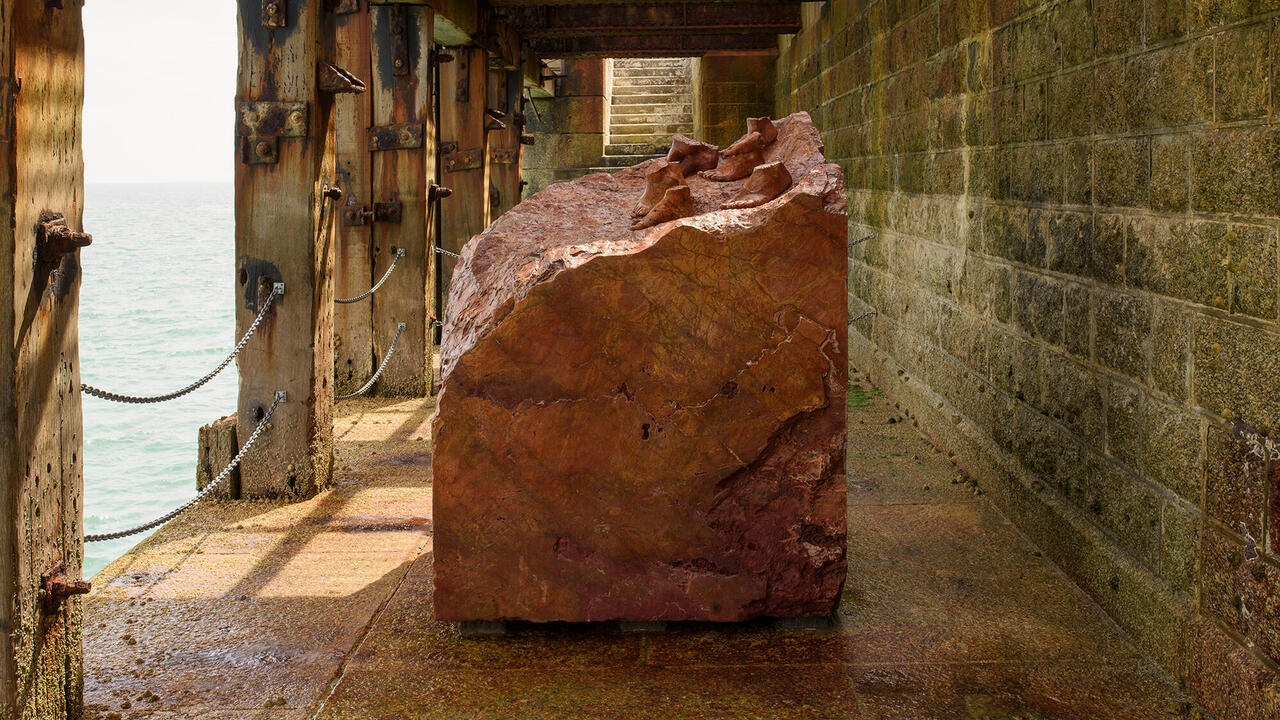Traffic: Conceptual Art in Canada

‘Traffic: Conceptual Art in Canada 1965–80’ was an ambitious exhibition, the first major account of conceptual art’s development in urban centres across the country. Curated by Barbara Fischer, Jayne Wark, Michèle Thériault, Vincent Bonin, Catherine Crowston and Grant Arnold, the survey was an educational affair, with detailed wall texts and a vast array of dematerialized practices. It was also a worthwhile endeavour, as the story had never been told before on such a scale, particularly through characters from regions such as the Prairies.
Many language-based works were of course included, conceived in part as responses to a world already too full of objects and images. Despite the undeniable art-historical significance of these works, the cumulative effect of consuming so much dematerialized material was a craving for stuff to really chew on. I was drawn to the sculptural statements located amidst the heavy linguistic traffic. For example, placed on a wooden plinth, Eric Cameron’s Lettuce (1979) was made over the course of many years by regularly applying thousands of layers of gesso to a head of lettuce, resulting in an irregular sphere that does away with the concept of skilful composition, while suggesting a ritualized context of personal investment akin to On Kawara’s series of ‘Date Paintings’. Tom Burrows’ Sand Pile (1973) includes a video featuring the act of ‘crafting’ a scaled-down earthwork: hands are shown straightening the sides of a sand pile to form a pyramid, over and over again.
In Jean-Marie Delavalle’s Une demi-heure (Half an Hour, 1973), the sounds of a bicycle ride were played through headphones. On the wall was an album featuring a microphone taped to the front of a bike frame. Similarly interactive is Dan Graham’s Likes – A Computer-Astrological Dating-Placement Service (1967–9), a survey published in a Halifax newspaper that poses unusual (and often hilarious) questions about romantic preferences. Graham’s interest in data collection is here combined with a commitment to casting a wide social net. Ian Carr-Harris’ I Thought I’d Better Not (1973) features the phrase ‘I thought I’d better not include my face so as not to embarrass you’, accompanied by a black and white photograph of a man depicted from the waist down. But the image and words are situated on a painted wooden table and in a hinged frame – a way of enhancing the work’s cultural connotations, taking the crucial, tactile step of setting a conceptual premise upon a physical stage.
I also dwelled on several prints made in the famed Lithography Workshop at the Nova Scotia College of Art and Design. Joyce Wieland’s O Canada (1970) was produced by pressing her lipsticked mouth on the lithograph stone while mouthing the words of the national anthem. The resulting red impressions, arranged as a grid of circles and ovals, reflect the recitation of words, but are also intimate bodily signs of various psychological states – from surprise to contentment, sarcasm and love. Elsewhere, Lisa Steele’s video Birthday Suit with Scars and Defects (1970) documents scars accumulated over the course of her life. The artist repeatedly touches each of these marks, tracing its shape. The body as marked surface is also addressed in video documentation of Ken Lum’s 1979 performance Entertainment for Surrey, in which the artist stood – on four consecutive days during the morning commute – beside a suburban stretch of highway, staring expressionless at oncoming drivers, some of whom felt sufficiently unsettled by the gesture that they called the police. On the fifth day, however, Lum replaced his body with a cardboard silhouette self-portrait, the work hence culminating in a self becoming signage.
I came away from ‘Traffic’ with a renewed and critical conception of what we should be taking now from the Canadian conceptualist heritage – and what should perhaps be left to archivists, or allowed to completely dematerialize, into thin air as pure ideas.
















